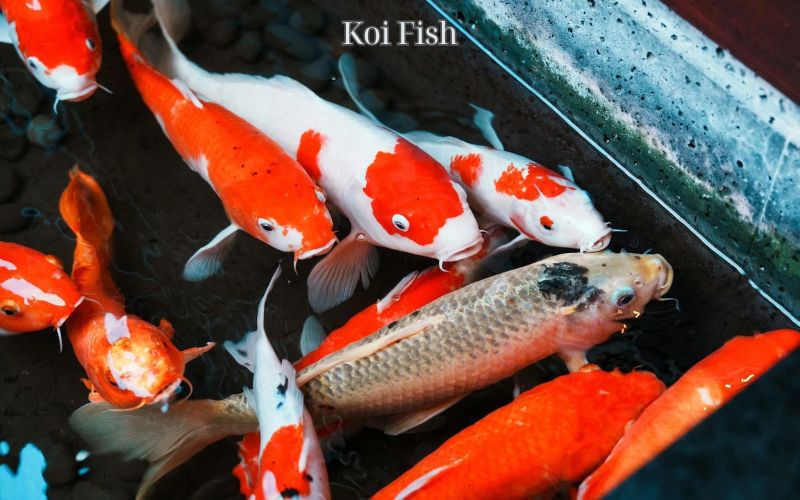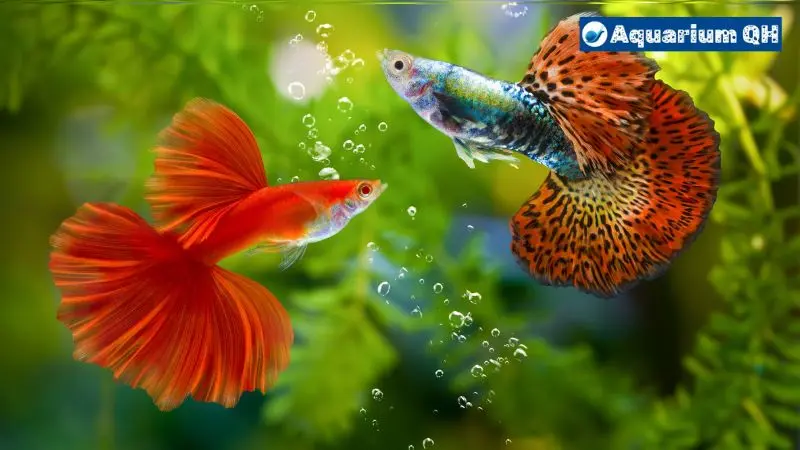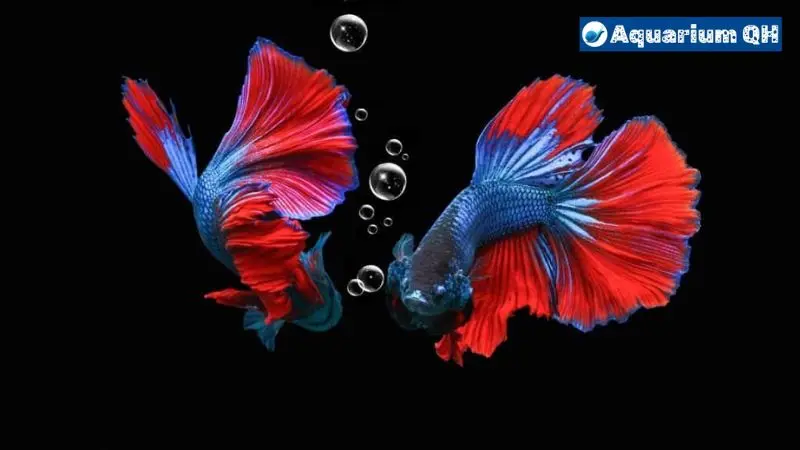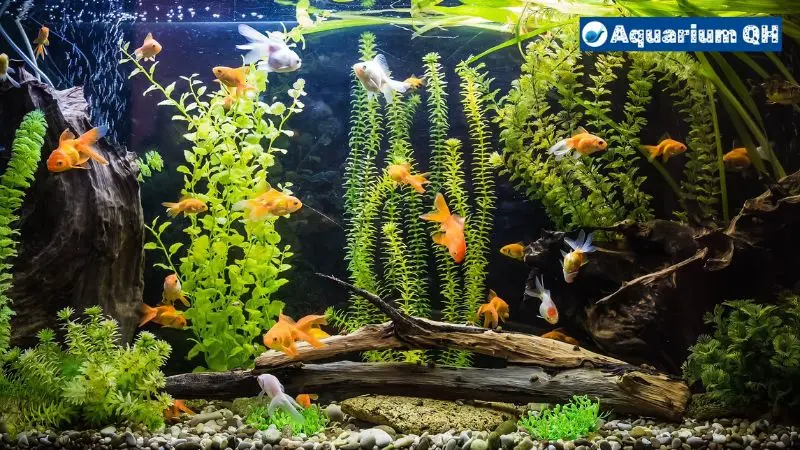Koi fish are renowned worldwide for their stunning beauty and symbolic meanings. Originally bred in Japan, these colorful carp have become a favorite in ornamental ponds and aquariums. With their vibrant colors, graceful movements, and cultural significance, koi fish captivate enthusiasts and beginners alike. Aquariumqh.com dives into the history, symbolism, types, care, and benefits of keeping koi fish.
What Are Koi Fish?
Koi fish, or Nishikigoi in Japanese, are a domesticated variety of the common carp (Cyprinus carpio). They are specially bred for their color patterns, size, and temperament. Koi are hardy and can thrive in outdoor ponds or aquariums, making them a popular choice for decorative purposes.
A Brief History of Koi Fish
Koi have a rich history dating back over 2,000 years. Originally kept as a food source in China, they were later introduced to Japan, where selective breeding began in the 19th century. Farmers in Niigata Prefecture discovered and enhanced their natural color mutations, leading to the diverse koi varieties we see today.
In Japanese culture, koi symbolize perseverance, prosperity, and good fortune. They are often associated with overcoming obstacles and achieving success.
The Symbolism of Koi Fish
1. Courage and Perseverance
Koi are known to swim upstream against strong currents, symbolizing resilience and determination.
2. Prosperity and Wealth
Gold and orange koi varieties are often linked to financial success and wealth.
3. Harmony and Balance
Their tranquil movements and vibrant colors promote a sense of peace and balance in any environment.
4. Love and Friendship
Some koi, like the red and pink varieties, are associated with love and familial bonds.
Popular Types of Koi Fish
1. Kohaku
- White base with red markings.
- One of the most traditional and beloved koi varieties.
2. Showa Sanshoku (Showa)
- Black base with red and white patterns.
- Represents harmony between contrasting elements.
3. Sanke (Taisho Sanke)
- White base with red and black markings.
- Elegant and widely admired.
4. Ogons
- Metallic gold or silver scales.
- Represents wealth and prosperity.
5. Butterfly Koi
- Long fins resembling butterfly wings.
- A newer variety prized for its unique elegance.
Setting Up a Koi Pond
Creating a suitable environment for koi is essential for their health and longevity.
1. Pond Size
- Koi grow large, so aim for a pond of at least 1,000 gallons.
- Depth should be at least 3 feet to protect against predators and temperature fluctuations.
2. Filtration System
- Install a high-quality filtration system to maintain water clarity and quality.
3. Aeration
- Use air pumps or waterfalls to ensure adequate oxygen levels.
4. Water Quality
- Maintain a pH between 6.8 and 8.2.
- Regularly check ammonia, nitrite, and nitrate levels.
5. Plants and Decorations
- Add aquatic plants like water lilies for shade and natural filtration.
- Avoid sharp decorations that could harm koi.
Feeding Koi Fish
A balanced diet is crucial for vibrant colors and growth.
Types of Food
- Pellets: A staple diet rich in nutrients.
- Vegetables: Lettuce, spinach, and peas.
- Fruits: Oranges and watermelon (in moderation).
- Protein: Shrimp or earthworms for growth during the warmer months.
Feed your koi 2–4 times a day during summer and reduce feeding in winter when their metabolism slows.
Common Health Issues and Solutions
1. Parasites
- Symptoms: Flashing (scratching against surfaces).
- Solution: Use anti-parasitic treatments.
2. Fungal Infections
- Symptoms: Cotton-like growth on the body.
- Solution: Isolate the fish and treat with anti-fungal medication.
3. Swim Bladder Disorder
- Symptoms: Difficulty swimming or floating.
- Solution: Feed with easily digestible foods like peas.
Benefits of Keeping Koi Fish
1. Aesthetic Appeal
A koi pond enhances the beauty of any garden or outdoor space.
2. Stress Relief
Watching koi swim gracefully can reduce stress and promote relaxation.
3. Cultural Significance
For those interested in Japanese culture, koi symbolize harmony, prosperity, and perseverance.
4. Educational Value
Caring for koi teaches responsibility and offers insights into aquatic ecosystems.
Popular Koi Fish Competitions
Koi fish competitions, such as the All Japan Koi Show, are popular among enthusiasts. Judges evaluate koi based on:
- Color vibrancy.
- Pattern symmetry.
- Body shape and size.
Winning a competition is a testament to a koi’s quality and its owner’s dedication.
Modern Trends in Koi Keeping
1. High-Tech Koi Ponds
- Automated feeding systems.
- Smart filtration systems with app monitoring.
2. Indoor Koi Tanks
For enthusiasts with limited outdoor space, indoor tanks provide an alternative.
3. Rare Varieties
Collectors are increasingly seeking rare and unique koi varieties, like Gin Rin and Doitsu.
Tips for Beginner Koi Keepers
- Start with a smaller number of koi to learn the basics of care.
- Invest in a good water testing kit to maintain optimal conditions.
- Research thoroughly about the specific needs of your koi variety.
- Join koi-keeping communities for advice and support.
Conclusion
Koi fish are more than just ornamental pets—they are living works of art with deep cultural and symbolic significance. Whether you’re setting up a tranquil pond or exploring the joy of koi competitions, these stunning fish offer a rewarding hobby for enthusiasts of all levels.
By understanding their history, care requirements, and symbolic meanings, you can create an environment where your koi thrive and bring joy for years to come. Embrace the beauty of koi fish and let them transform your space into a serene haven.
Related Posts:
- Betta Fish Hides Behind Filter: Causes and Solutions
- Bubble Eye Black Moor Goldfish: A Unique and…
- Angelfish and Neon Tetras: Can They Live Together?
- Out of Water Survival: Can Mystery Snails Live Out Of Water?
- Do Betta Fish Need Darkness to Sleep? The Ultimate Guide
- Exporing How Many Fishing Rods per Person in Arizona?




